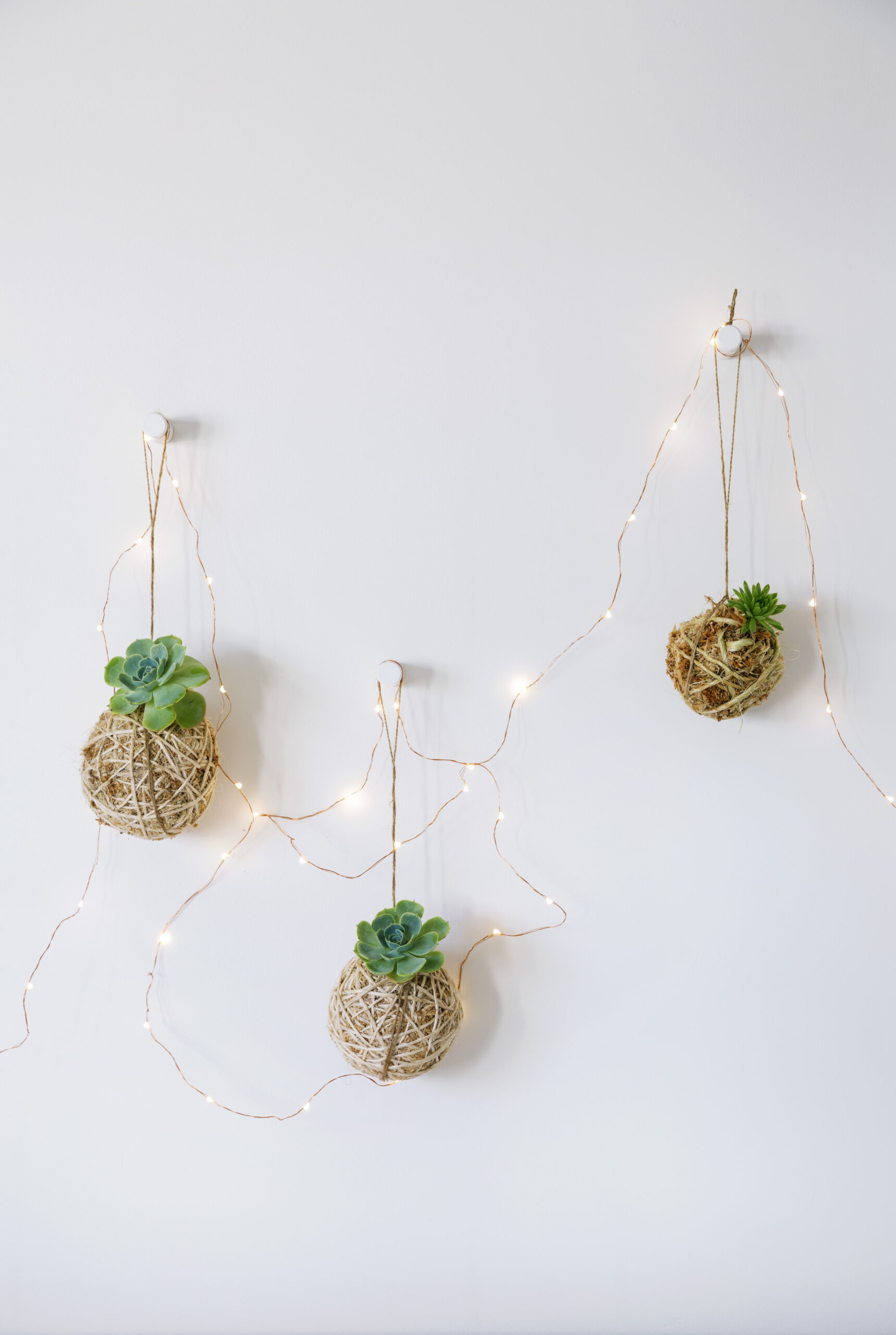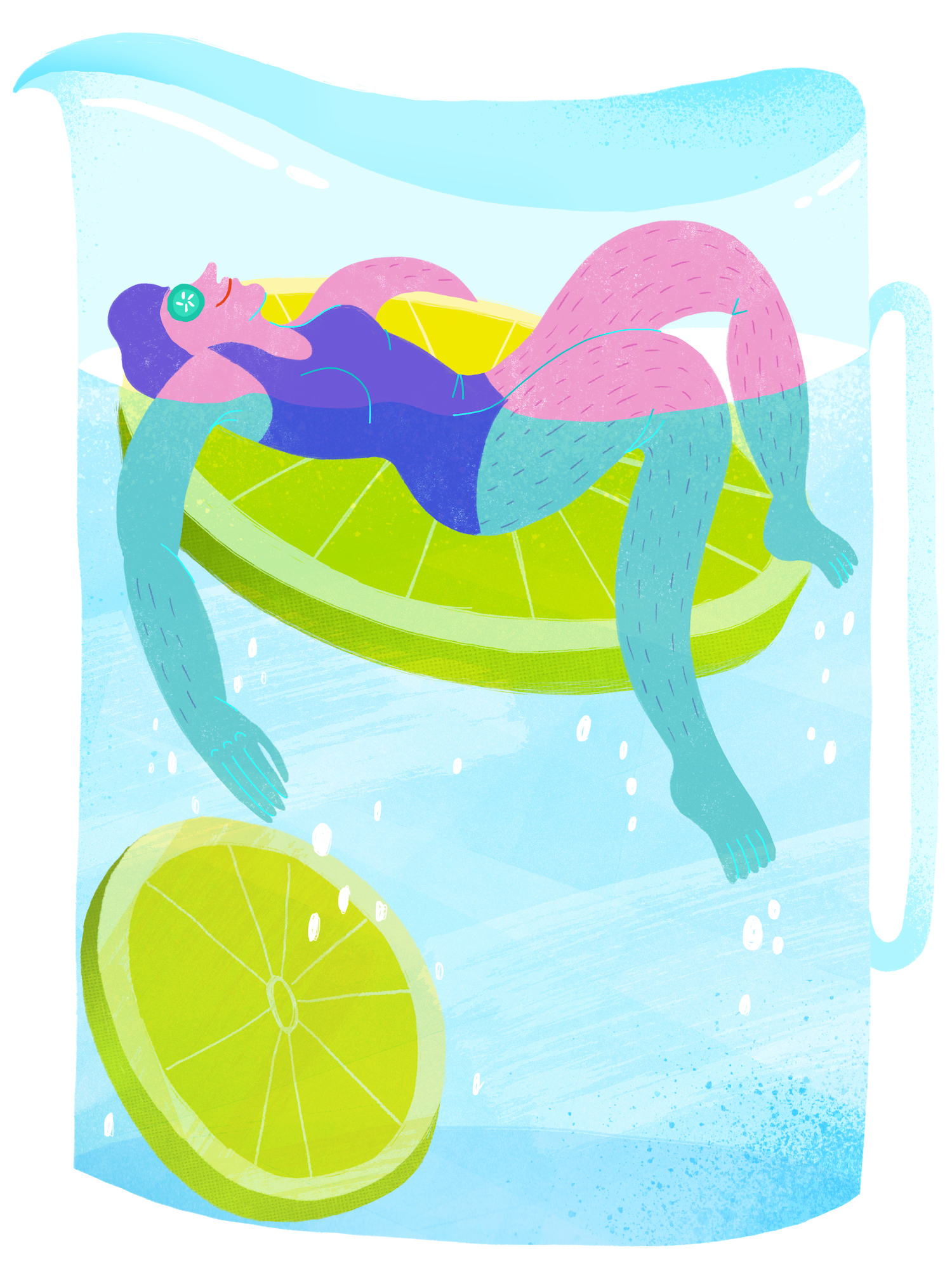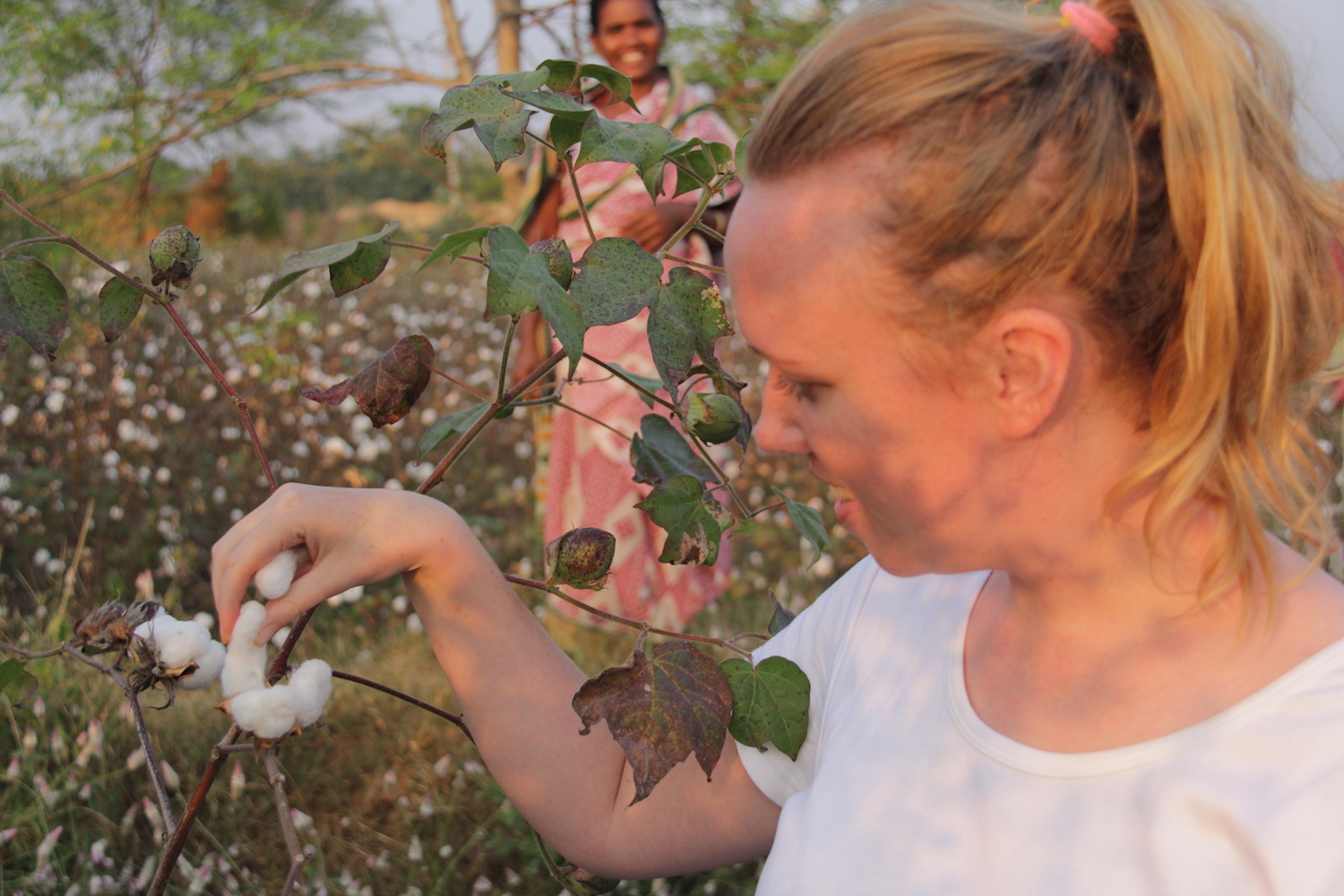Learn about the Japanese art of creating potless plants with this Mexican Gem project by botanical extraordinare, Coraleigh Parker, from her new book, Hanging Kokedama.
Extracted from Hanging Kokedama by Coraleigh Parker, published by Murdoch Books, distributed by Allen & Unwin, RRP $45. Photography Larnie Nicolson
Kokedama are, once mastered, very easy and rewarding to make. It is such a great art form to take up as a hobby, combining the truly grounding practice of getting one’s hands dirty with the artistic gratification of creating a beautiful object.
When contemplating what to create it is easy to become overwhelmed or overexcited by the potential choices in front of you, but remember to start small and build up your confidence. When learning, it is best to start with a size that ts easily into your hands. Try doing easy-care, small plants such as succulents to begin with; once you get the hang of it, move onto creating bigger or more challenging plants.
The most important thing to consider is where your kokedama will be living. This will inform your plant choice. Some plants, such as cacti, prefer hot, sunny rooms while others, such as ferns, are happy in low light and cooler temperatures.
The type of plant you choose will also inform your choice of wrapping material. There is the aesthetic to consider but also the lifespan of your chosen wrapping bre. Natural fibres will break down over time and may need to be replaced or removed. Take this into account when designing your kokedama. Try sketching out different rooms and adding kokedama to the picture to see how it feels. Sketch different plants as kokedama to see what the final effect will be.
Making kokedama is messy. The moss requires soaking and subsequently will create puddles and drips. The soil recipes require various ingredients to be measured and mixed. Although it is not strictly an outside activity, one must be prepared. Set up a designated area with all the required items. It is not necessary to wear gloves, and many and that wearing them inhibits one’s ability to wrap and manage the ball. Sticking to organic ingredients will limit exposure to harmful substances. The beauty of making kokedama is the contact with the natural ingredients.

How to make a Mexican Gem kokedama – Echeveria elegans
Family name: Crassulaceae
Type: Succulent
Light: Bright
Watering: Low
Growth speed: Moderate
Pets: Mildly toxic
Common concerns: Overwatering, root rot and mealy bugs
Soil recipe
- 1 part potting mix
- 1 part perlite
Echeveria is easily the most common succulent sold as house plants. Purely for the reasons of being an absolute breeze to care for and offering so many varied forms of colour and texture. Often the leaves will have a wax or pale bloom coating their surface. Keep in mind this can be easily damaged if handled. Most echeveria will flower indoors, producing long stems with delicate and often incredibly intricate bell-shaped profusions at the end.
Growing conditions
Echeveria elegans is a long-time favourite for kokedama. He is so tolerant. He really doesn’t mind having his roots disturbed at all, so he is great for learning how to make kokedama with.
Once actually in a kokedama he only needs a soak once a month. Occasional misting in between times if you can manage it is nice but he still probably won’t complain if you forget. He loves a good sunny spot and will reward you with a blush of pink across his leaf tips, but indirect light is also fine. He will just stay his lovely turquoise green.
When making this guy up, be sure to use a very firm hand when wrapping and use plenty of string. As he dries out between watering the moss itself dries and shrinks. If you have used a loose wrapping style the string may come off the ball or sag unattractively.
Water and food
Water by soaking until saturated once a month in summer and less in winter. Exact timing will depend on the size of the ball and climate of the house. If leaves start to appear wrinkled he needs a drink. Definitely err on the side of too dry, however. Overwatering will cause root and stem rot very quickly. You will get the feel for when he has dried out enough. The ball will be very pale and almost weightless.
Feed during spring, but only use a half-strength organic liquid fertilizer.






